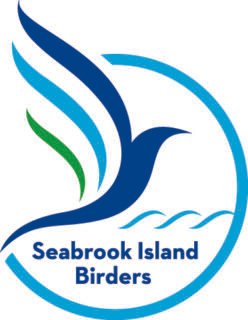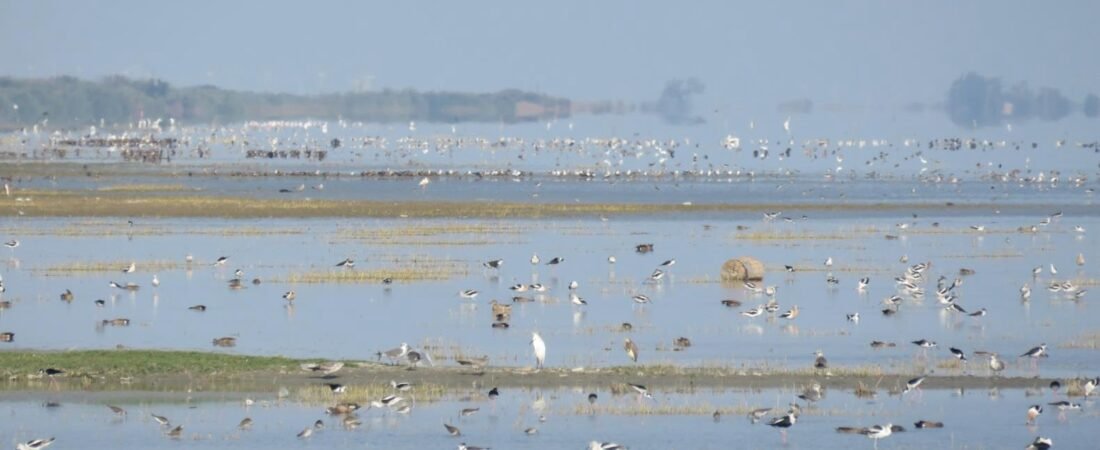As of August 29th, 2025, we have 11 satellite-tagged Red Knots still transmitting location data. Two were banded on March 30th and nine on May 18th—which we have now been tracking for 151 days and 102 days, respectively.
Below are their flag codes:
| LC1 | LM2 |
| LN0 | LN4 |
| LN5 | LN6 |
| LN7 | LN8 |
| LP7 | LP8 |
| LM9 |
Here are their current locations:
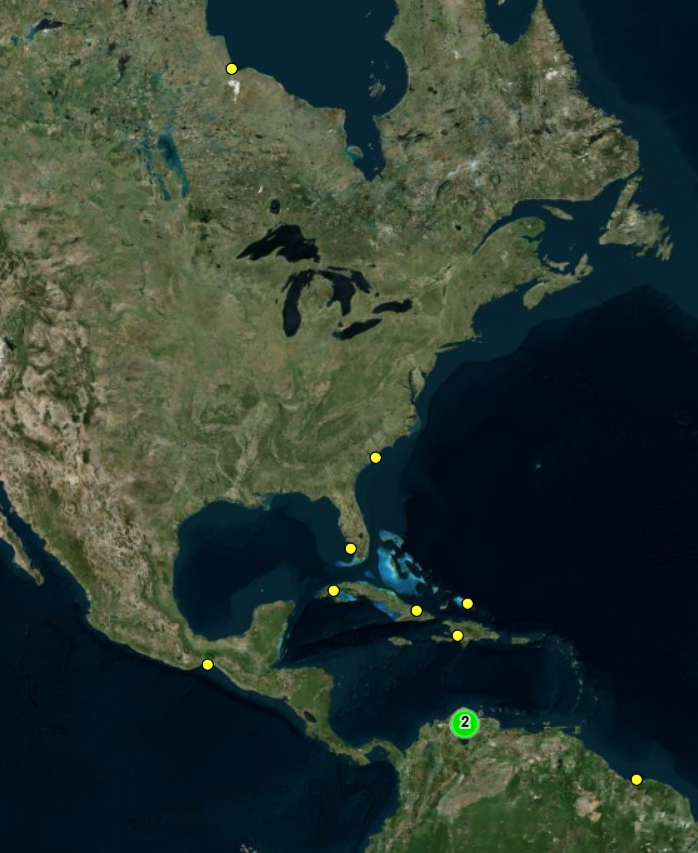
Two knots completed lengthy flights since our last update on August 19th. LN6 arrived in South Carolina on August 8th, and after spending 10 days in Cape Romain National Wildlife Refuge, flew over the Atlantic Ocean and the Caribbean and arrived in Venezuela on August 21st. Interestingly, it is now in a similar area on Punta Maragüey, where 2 of our previously tagged Red Knots were also recorded- more on that in a separate update!
Similarly, LN0, departed from the Nelson River delta on Hudson Bay and flew to the Southeastern U.S. on the evening of August 20th. LN0 made a brief stop in Cape Romain National Wildlife Refuge, South Carolina, on the evening of August 23rd, and continued on to Rookery Bay National Estuarine Research Reserve in southwest Florida.
Both birds likely attempted to breed on Victoria Island in Canada, then stopped on the western shores of Hudson Bay. They both then stopped in South Carolina, although, for different lengths of time and dates, and had different flight paths. See below:
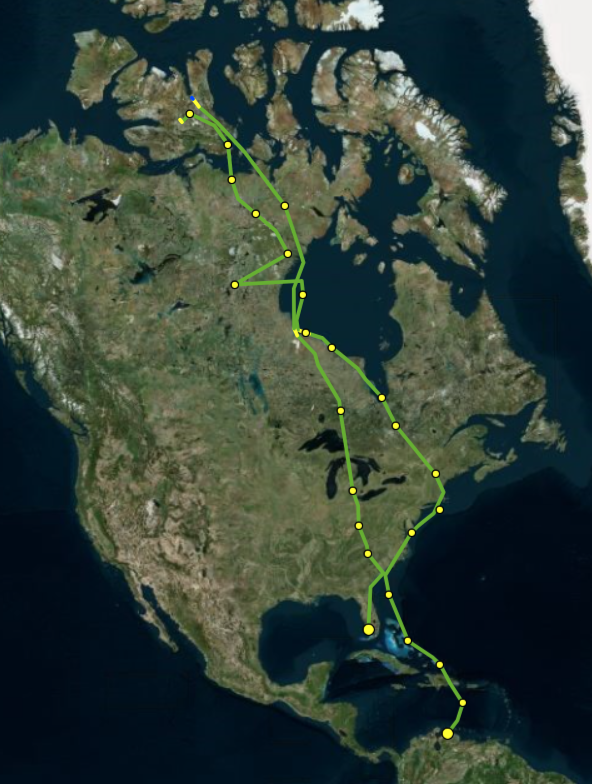
We connected with colleagues and partners working in the field on shorebirds that have insights into the habitat the birds may be using. A true testament of bird migrations transcending geopolitical boundaries and connecting us across the hemisphere!
Below are some photos of the landscapes we received from these connections, where four of our tagged individuals are currently spending time:
LN0- Rookery Bay National Estuarine Research Reserve, FL. Photo and submission by Megan Hatten, Audubon Florida/Florida DEP.
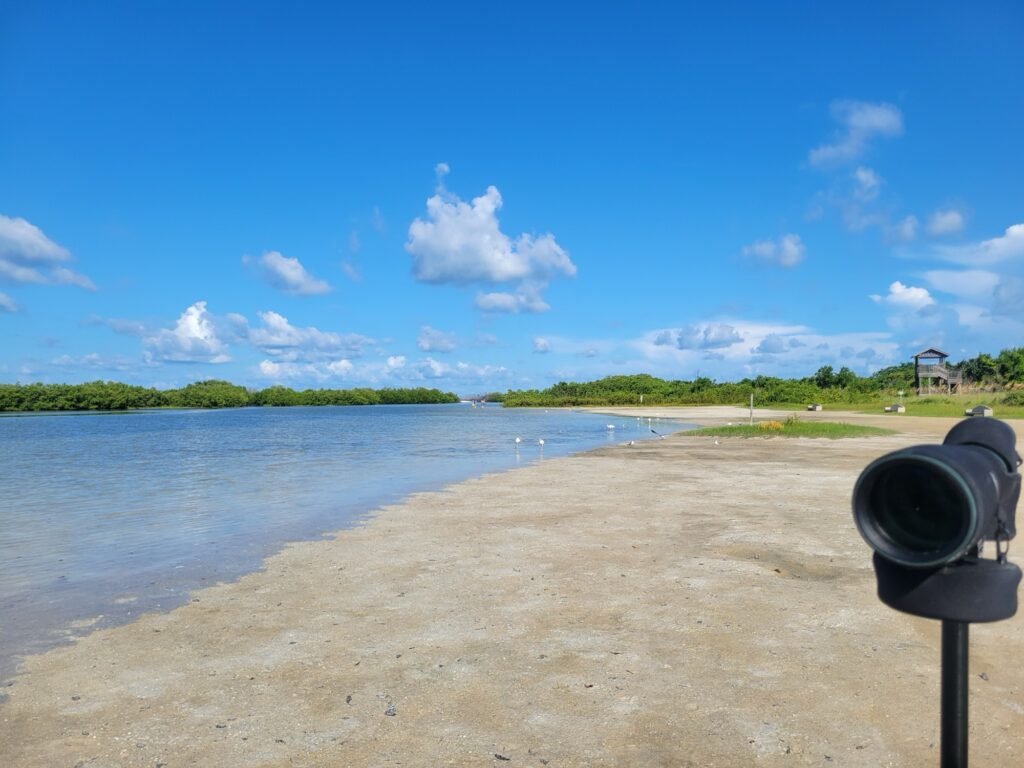
LN5- Coppenamemonding, Suriname. Photo and submission by Arne Lesterhuis, Manomet Conservation Sciences.
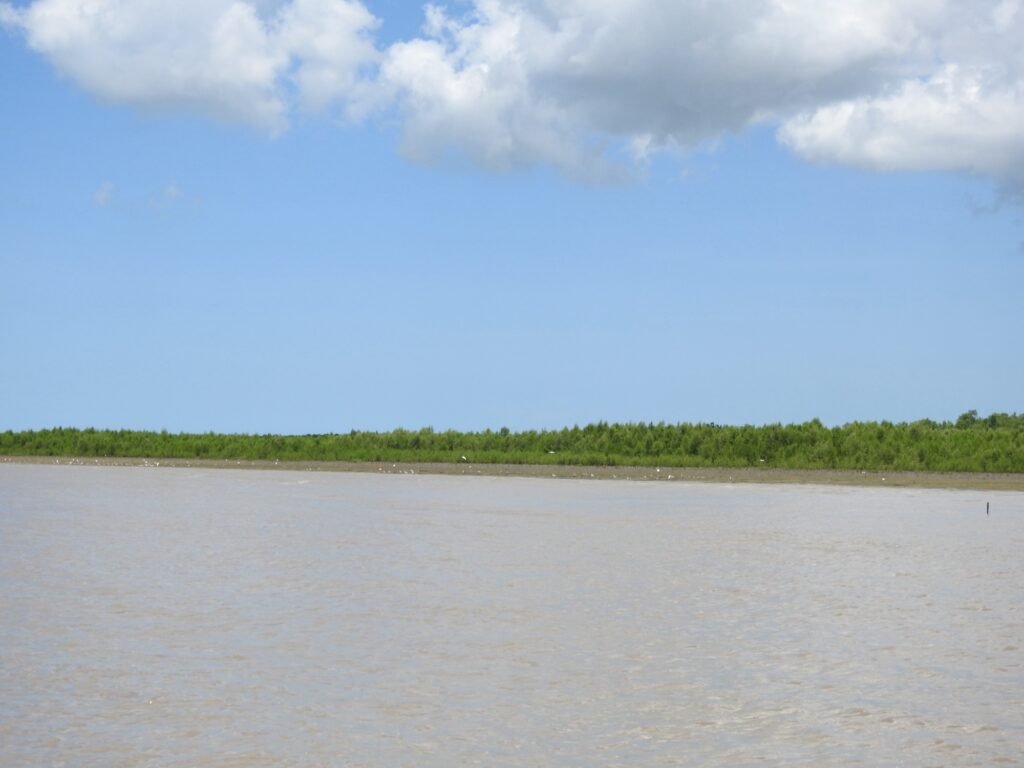
LN6- Punta Caimán, Venezuela. Photo and submission by Sandra Giner, Universidad Central de Venezuela.
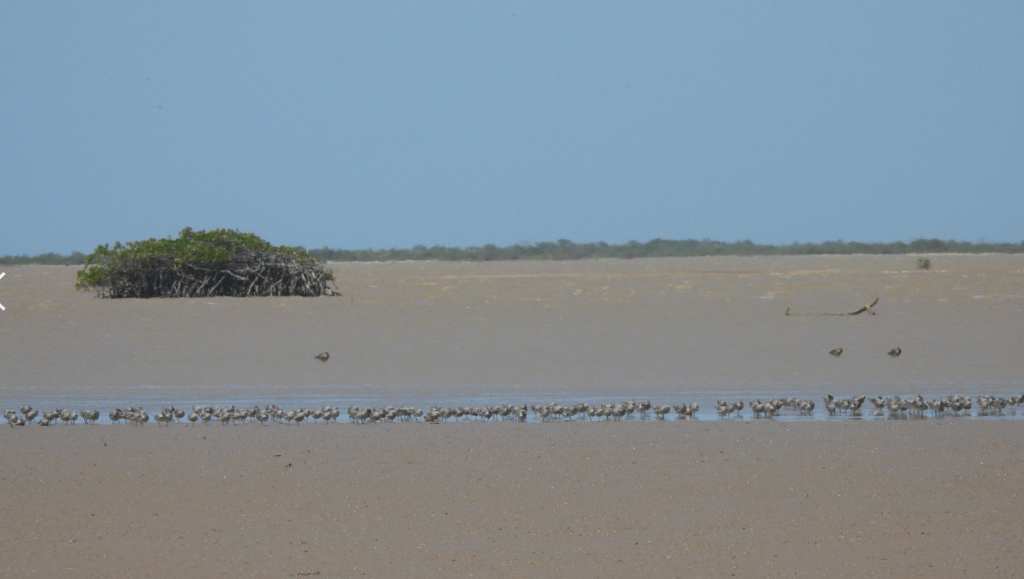
LN8- Laguna Quirio, San Mateo del Mar, Oaxaca, Mexico. Submission by David Newstead, Coastal Bend Bays & Estuaries Program. Photo taken by Eric Hernandez Molina, Pronatura Sur.
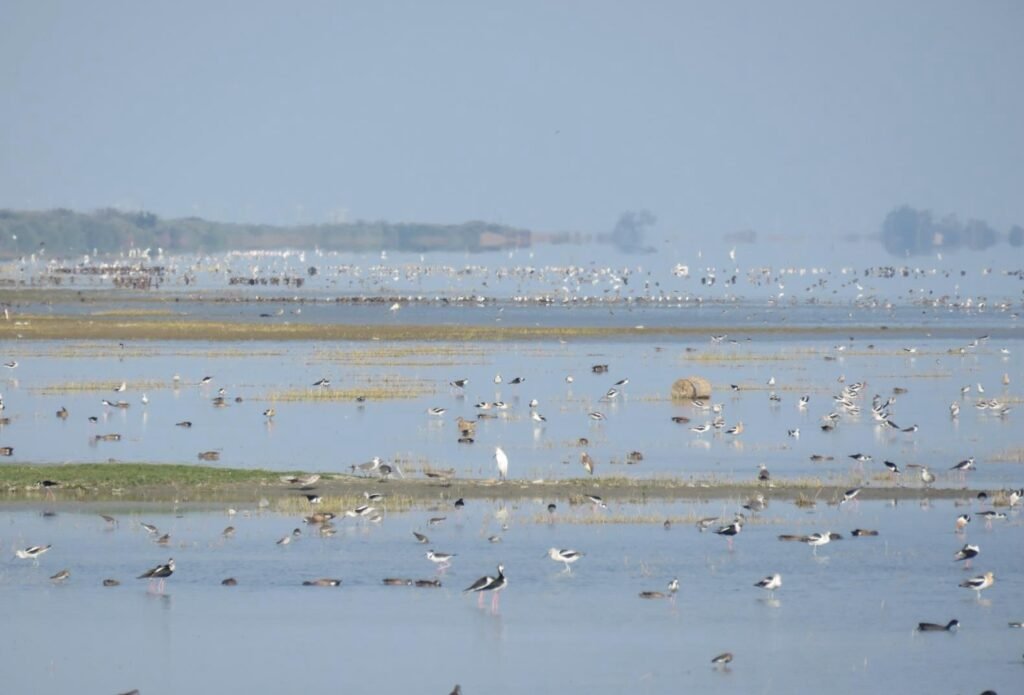
LN8’s track sparked interest among Red Knot scientists. David Newstead (Coastal Bird Program Director of Coastal Bend Bays & Estuaries Program, Texas) and Wendy Walsh (Senior Fish and Wildlife Biologist, U.S Fish and Wildlife Service), noted that LN8 may provide the first confirmed record of the rufa subspecies of Red Knots wintering in Oaxaca, Mexico. Thanks to new technology and collaborations with colleagues, we are discovering where these birds are going, information that is reshaping what we know about Red Knot distribution and migration!
More on our project, to receive future updates, and to view past updates here.
Written by Cami Duquet, Outreach & Stewardship Coordinator, Coastal Bird Program, SCDNR
Reprinted with permission by Seabrook Island Birders
